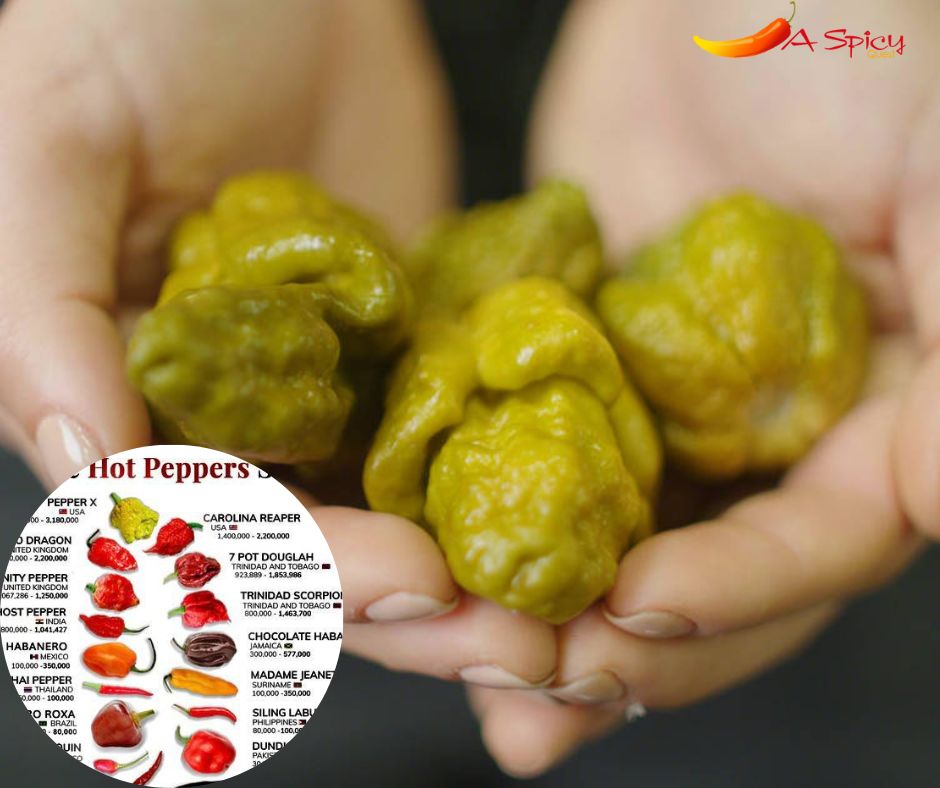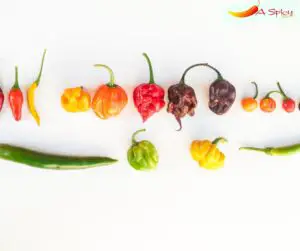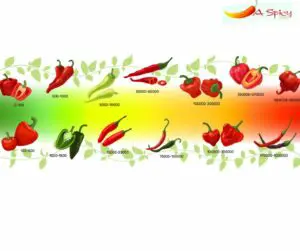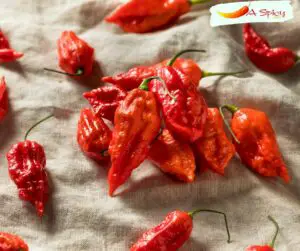
Hot peppers are a staple of many cuisines worldwide, but there’s always something new to learn about them. Whether you’re looking to grow your own spicy garden or want to know more about how hot peppers work, this article will keep you interested from start to finish.
What Is the Hottest Pepper on the Scoville Scale?
The Carolina reaper is the hottest pepper on the Scoville scale and is native to the U.S. It has a Scoville rating of between 1.57 million SHU to 2.2 million SHU. Ed Currie of PuckerButt Pepper Company created it in South Carolina in 2006.

The Carolina Reaper is a cross between the Pakistani Naga Viper and the Red Habanero chili pepper. It was bred in South Carolina and tested at 2.2 million on the Scoville scale, which made it easily dislodge the then-hottest pepper on the scale, the Trinidad Moruga Scorpion pepper.
What Does The Carolina Reaper Taste Like?
The Carolina Reaper, at 2.2 million Scoville heat units (SHU), is considered the hottest pepper in the world. It also has a sweet and fruity flavor that comes from its heat-loving genetics.
The Carolina Reaper has been known to cause hallucinations when consumed in large quantities. In extreme cases, there have been reports of seizures from enthusiasts who have tried to take on the heat generated by this pepper.
After eating this pepper, avoid drinking water or alcohol as a means to cool down the burn effect. Instead, consider taking milk or dairy products as well as any lime, lemons, or even starchy meals.
How to Grow the Carolina Reaper
Here are some tips for success if you want to grow your own Carolina reaper.
- Plant it in a pot. The soil should be moist but not wet, and the plant should be able to drain well.
- Before germination, make sure the pot is kept in a warm, bright place.
- Make sure to water the plant, but make sure it doesn’t get flooded.
- After germination, the plant would need sunlight for about 6 to 8 hours a day.
- As the plant begins to bear fruit, it would require you to water it less to avoid infection.
- Remember all chili pepper plants are susceptible to fungal attacks, so pay close attention to your plant at all times.
Other Unofficial Hottest Peppers on The Scoville Scale
The Carolina pepper remains the hottest pepper in the world by beating its closest rival to the throne by a wide margin. However, it might not remain so forever. Here is some potentially hotter pepper:
Pepper X
Pepper X is a hybrid chili pepper that is grown in the United States. According to its creators, it has an unofficial Scoville rating of 3,180,000 SHU and is a cross between multiple peppers. He crossed several peppers to create a pepper hotter than the Carolina reaper.
The Pepper X was created to make a hotter chili than the Carolina Reaper or Trinidad Scorpion on their own. This pepper contains a large sum of capsaicin which is responsible for its hotness.
Its name comes from its high heat level (Pepper X = 3180000000), but it also refers to its mystery status: no one knows precisely what this pepper looks like or tastes like because it’s private.
Dragon’s breath pepper
The dragon’s breath pepper is a superhot chili pepper that was created in 2010 by Chilli farmer Neal Price and Nottingham Trent University and NPK Technology. This hybrid chili pepper appears to be a variant of 7 pot infinity pepper, producing a pepper with an average heat level between 1.00 million and 2.48 million Scoville units.
The dragon’s breath chile produces an intense heat that lasts for about 10 seconds without causing any irritation on your tongue or mouth as other peppers do. The initial heat fades quickly and leaves behind a lingering spicy aftertaste similar to some Jalapeño varieties.
What Is the Second Hottest Pepper in The World?
The Trinidad Moruga Scorpion pepper is a hybrid of the moruga scorpion and Trinidad scorpion peppers. It has a Scoville rating of 1.2 million to 2 million, making it the hottest pepper as of 2012 at the New Mexico Chile Conference.
It is also about 50 times hotter than habanero peppers, which are themselves very spicy. The heat from this particular chili pepper can be described as a slow burn that creeps up on you. Not only does it give you an intense feeling of heat, but it also causes sweating and numbness in your tongue and lips.
This hot spice makes sauces for dishes such as Jamaican jerk chicken or vegetarian chili con carne.
Benefits of Eating Hot Chili Peppers
Not only can hot peppers help you lose weight, but they can also improve your digestion, fight cancer, and prevent heart disease. So if you’re looking for a way to stay healthy and fit that won’t break the bank, and isn’t too weird, consider adding spicy food to your diet.
Hot peppers contain capsaicinoids which help boost metabolism and lower blood sugar levels by switching off genes involved in fat storage. They may also help reduce inflammation, a known cause of obesity, by reducing levels of pro-inflammatory proteins that slow down metabolism.
Hot chili pepper is also helpful with arthritis pain and swelling, especially on the knees and hips. This can be particularly beneficial for those who have osteoarthritis of the knee or hip. Also, arthritis patients report relief from topical creams containing capsaicin because it reduces pain by acting on sensory nerves in skin cells.
And finally, capsaicinoids have been shown to reduce appetite by increasing the production of CCK (cholecystokinin).
Conclusion
If you are looking for a new way to spice up your life, the Carolina reaper pepper might be just what you need. This pepper has a kick that will please even the most seasoned, spicy food fanatics.
While it remains the hottest pepper in the world, as recognized by the Guinness book of world records, it has some strong competitors in the waiting. The Pepper X and the Dragons breath pepper are said to be formidable in the heat they pack. And while they await official testing, we might soon crown a new pepper as the hottest in the world.







